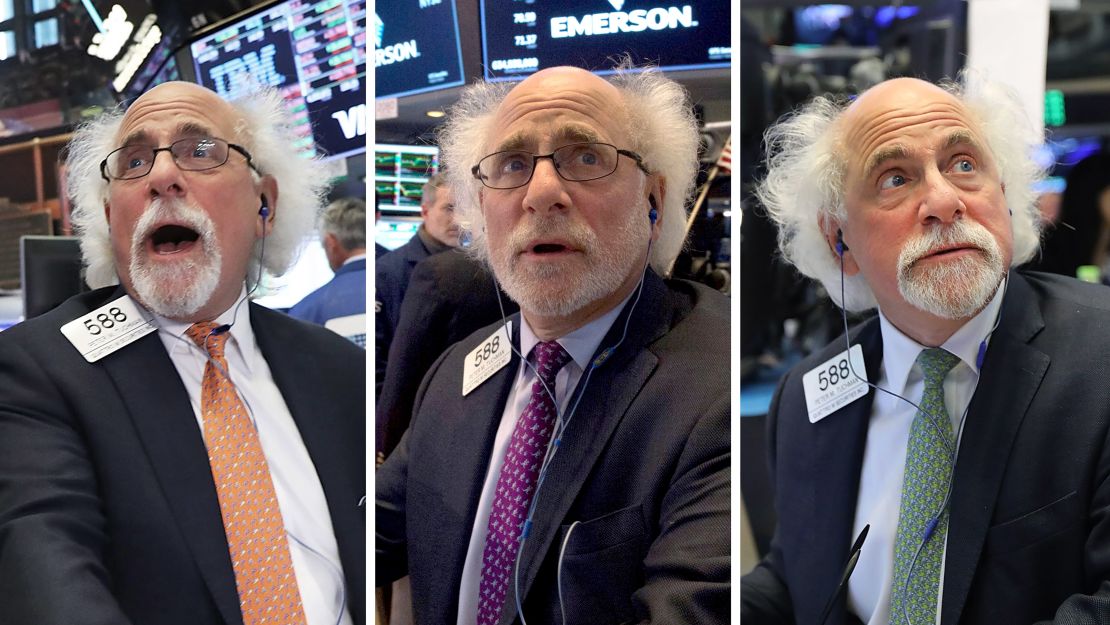When trader Peter Tuchman first set foot on the floor of the New York Stock Exchange in 1985, there wasn’t a computer in sight.
All trades were performed on slips of paper that would end up blanketing the floor by mid-morning.
“It was like Grand Central Station back then,” Tuchman told CNN Business.
Nowadays, most trades are done by computers. When Tuchman started at NYSE, its 1,366 trading seats were filled. He estimates there are now fewer than 700 people working on the floor.
The remaining traders, who rush across the NYSE’s trading floor in their iconic blue jackets, have been accused of being there for the benefit of the media outlets that report from the floor.
Tuchman, however, believes that the floor traders are crucial to the market’s stability.
To get his message heard, he’s been leveraging something unique: his own image. It turns out, Tuchman is kind of famous.

You may have seen his face in a news photo — unruly white hair, wide eyes, mouth agape – as he stares at screens on the floor of the New York Stock Exchange.
Photos of the 60-year-old Quattro Securities broker’s facial expressions are regularly used by the press to signal the drama of a trading session. He’s photographed so often that Buzzfeed called him “the most photographed trader on Wall Street.”
Tuchman got his first job on the floor as a teletypist. Two years later he had worked his way up what he calls the trading floor’s “caste system” to get an exclusive trading seat.
And for 22 years, Tuchman was an ordinary trader. Then a photo of his reaction to the Dow plunging more than 400 points in a single day in February 2007 — 3.3% at the time — landed on the cover of the New York Daily News. The rest was history for the most photographed trader.
The computers that run trades sometimes fail. But Tuchman believes that he and the other traders offer reassurances to investors during technical glitches.
“Seeing us as humans on the floor, seeing us involved when things get very volatile and stocks stop trading, when there’s news and headlines that make the markets go up 1,000 points, it gives credibility to this market,” he said.
CNN’s Erin Burnett gave him the nickname “Einstein,” in honor of his knowledge of the markets and his unruly, white hair when she anchored CNBC’s “Squawk on The Street.”
Tuchman has embraced his popularity. He started selling Dow hats that he wore every time the index surpassed a new milestone. Tuchman even curated an art show titled “Art and Money” inside the New York Stock Exchange.
Tuchman says he takes seriously the responsibility of his profession.
“On any given day, we’re fighting for our lives in a lot of ways to represent our customers right and do the right the thing,” Tuchman said. “The emotions that you see are real.”




















